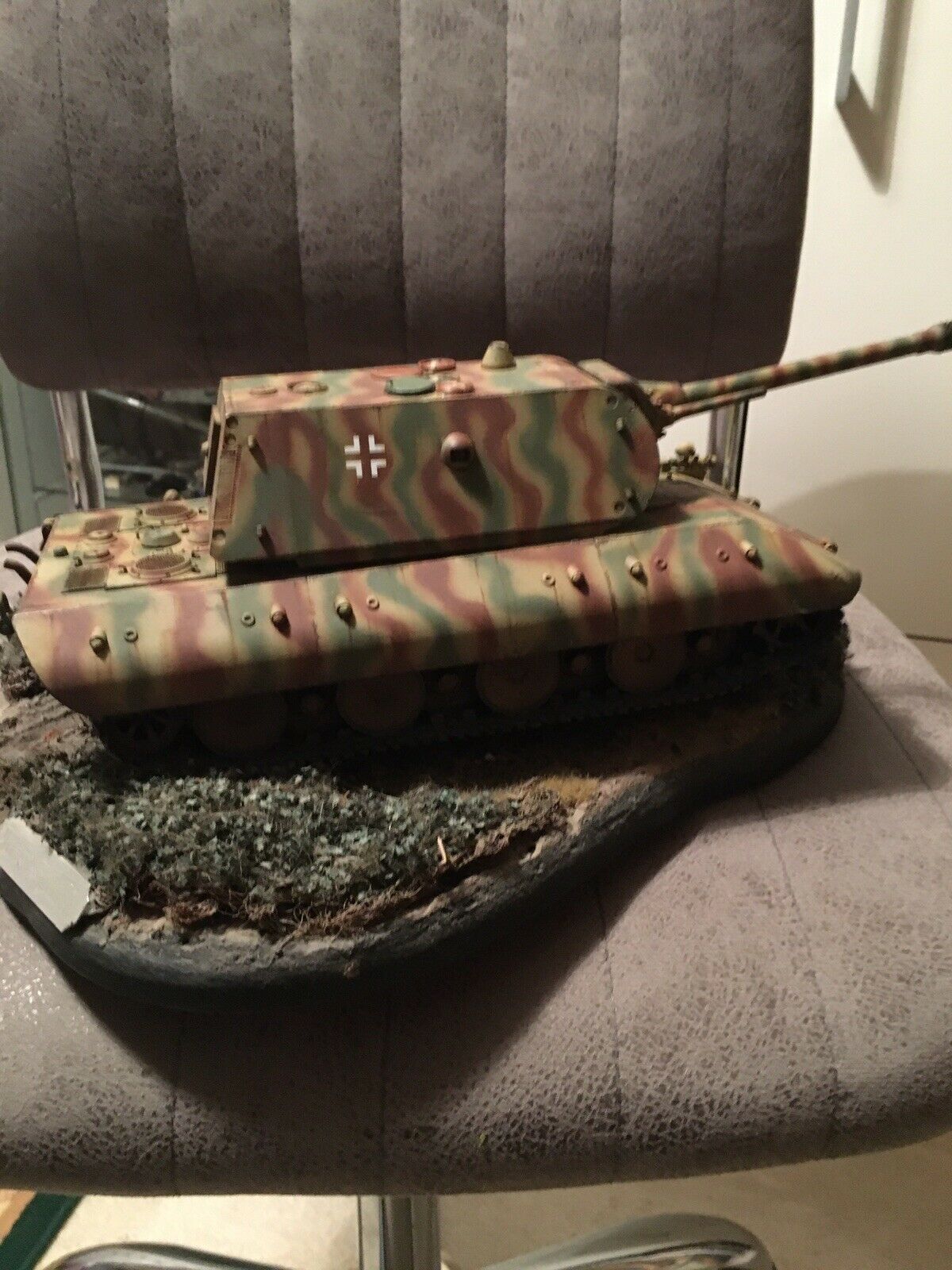The Panzerkampfwagen E-100 was a German super-heavy tank project developed during World War II. As part of the Entwicklung (E) series of standardized armored fighting vehicles, the E-100 was envisioned as the pinnacle of German tank design, intended to surpass even the formidable Tiger II and Maus tanks. Although the E-100 never progressed beyond the prototype stage, its design represents an ambitious, if ultimately unrealized, effort to create a dominant battlefield presence.
Development and Design
The development of the E-100 began in 1943, as part of the broader Entwicklung series aimed at standardizing and streamlining German tank production. The series included a range of vehicles from lighter tanks (E-10, E-25) to heavy and super-heavy tanks (E-75, E-100). The E-100 project was initiated by the Adler company, with the goal of producing a tank that combined extreme firepower, armor protection, and mobility.
The E-100 was designed to weigh approximately 140 metric tons, making it one of the heaviest tanks ever conceived. The design included a massive, heavily armored hull and a turret capable of mounting either a 15 cm KwK 44 L/38 gun or a 17 cm KwK 44, giving it unparalleled firepower. The tank’s armor was to be exceptionally thick, with frontal armor up to 200 mm, side armor up to 150 mm, and rear armor up to 150 mm. This extensive protection was intended to make the E-100 nearly impervious to existing Allied anti-tank weapons.
Armament and Capabilities
The E-100 was designed to be armed with a choice of powerful main guns. The primary armament options were:
- 15 cm KwK 44 L/38: This gun was intended to provide a balance between firepower and ammunition capacity. Its high-explosive shells would have been devastating against both fortified positions and armored targets.
- 17 cm KwK 44: This larger gun would have offered even greater firepower, capable of destroying virtually any Allied tank or fortification with a single shot. However, the size and weight of the ammunition would have reduced the overall capacity and rate of fire.
In addition to its main gun, the E-100 would have been equipped with secondary armaments, including machine guns for close-in defense against infantry and light vehicles.
Mobility and Challenges
Despite its immense weight, the E-100 was designed with mobility in mind. It was to be powered by a Maybach HL234 engine, capable of producing 1,200 horsepower. The tank’s suspension system was based on an enhanced version of the Tiger II’s, featuring overlapping road wheels to distribute the weight more evenly and improve cross-country performance.
However, the sheer size and weight of the E-100 presented significant engineering challenges. The strain on the engine, transmission, and suspension components would have been immense, potentially limiting the tank’s operational range and reliability. Additionally, the logistics of transporting such a heavy vehicle posed serious challenges, particularly given the deteriorating infrastructure of late-war Germany.
Operational History and Legacy
The E-100 project progressed slowly due to the increasingly dire war situation for Germany. By the time Allied forces were advancing into Germany in 1945, only a partially completed prototype existed. This prototype was captured by British forces at the Henschel tank testing grounds in Haustenbeck.
While the E-100 never saw combat, its design offers a glimpse into the extremes of tank development during World War II. The concept of a super-heavy tank with overwhelming firepower and armor protection was theoretically sound but practically flawed due to the engineering and logistical challenges involved.
Conclusion
The Panzerkampfwagen E-100 stands as a symbol of the ambitious, if ultimately impractical, efforts of late-war German tank design. Its planned capabilities highlighted the German focus on creating dominant armored vehicles, but the practical difficulties of producing and deploying such a tank proved insurmountable. Although the E-100 never went beyond the prototype stage, it remains a fascinating example of the extremes of World War II armored warfare technology.








